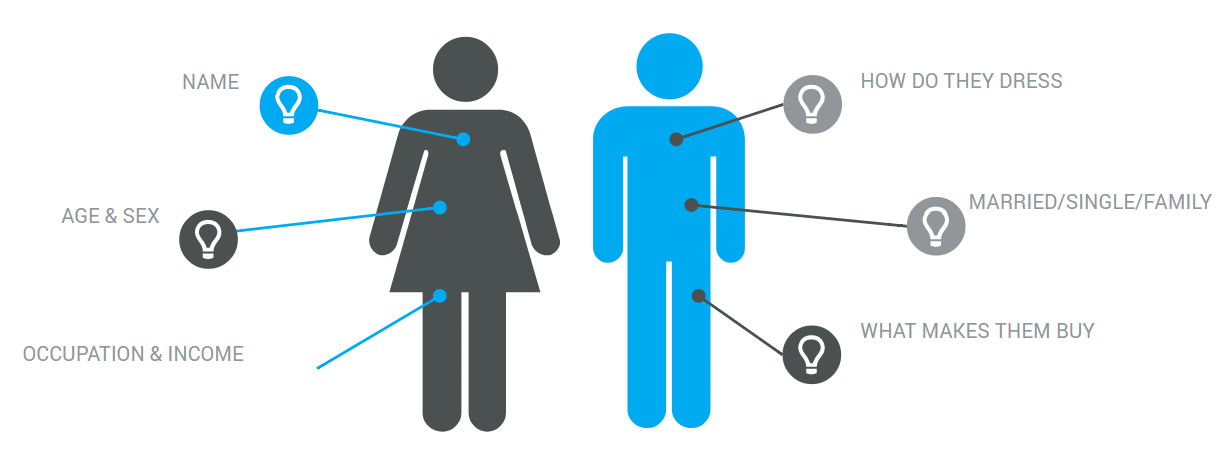Part 1
Is Email Marketing Still Relevent
Part 5
The From Name and Address
Part 2
Putting The Customer First
Part 6
The Style & Body of the Email
Part 3
Writing A Great Email Subject Line
Part 7
Segmenting Your Mailing List
Part 4
The First Line or Preview Line
Part 8
Building Your Email Marketing List
I've put together a couple of great courses for you
In person or online Email Marketing Training? Check out my latest course.
We’re going to look at creating personas for your email campaigns and adding more value to the content of your emails.
I’ve also created a customer persona character sheet in a printable PDF format to help you build your perfect customer. Download it here.
Think customer first
“Instead of thinking about what you want from your customer,
think about what they want from you.”
Remember this statement as it’s one way to help you focus on what the customer wants from you and not on what you want from them.
For example, instead of simply sending a long list of your latest products, send a voucher code along as well, or demonstrate how your services could benefit your customer via an article or video.
Also, make sure you understand exactly why people signed up to your list in the first place:
- They may like your brand or products and want exclusive discounts
- They may want to be shown ideas on how to use or wear your products
- They may want advice, tips, help and information about your service sector
- They may want to feel important and see exclusive content and offers.
“Look at why the person subscribed to your list and then
provide them what they want.”
Creating customer personas

Thinking like your customer can be a tricky thing to do, especially when you’re the person who is trying to sell to them, and most businesses will have more than one type of customer. This is where building a persona can help.
Create two or three fictional customers and when you come to write your emails, look at their persona and then create something that they will want to engage with.
Write down who your perfect customer is and what makes them tick. Take a big leap and put together a character sheet describing exactly who your customer or customers are.
Here’s a few ideas. You may want to add or remove some of these ideas depending on your industry.
- Name, age and gender.
- Are they married or single?
- What would be the perfect occupation for your customer? Are they a professional?
- What would their income be?
- How do they dress? Describe a weekend outfit.
- Are they well groomed?
- Pick three films they would like.
- Where would they go on holiday?
- What influences their decision to buy?
One of the most important things to understand is what influences their buying decisions. Here’s a few thoughts on what makes a person buy.
- Low price. You’re the cheapest.
- Luxury or quality product.
- Designer label or brand name.
- Location. You’re close to home.
- Your ethics, advocacy or attitude appeals to them.
The key is to work out exactly who your customer is, what makes them buy from you and then create a targeted email.
If you want to take this technique to the next level, you could create a separate persona for each segment of your mailing list so that you can target a small section of your list. More on segmentation in another post.
Look at your persona every time you write a new email and use it to change the perspective of your thinking. Instead of thinking about what to sell to them, you can now think about exactly what they want from you.
Adding Value
Now that you know who your customer(s) is, you can start working on adding value to your emails. This means you need to think about ways to make a sales or an information style email more useful to your customer.
Here’s some examples:
No Value
“We’ve won the best business award and are delighted to share some photos of the awards night with you”
Value
“We’ve won the best business award and to celebrate we’re offering one lucky person a bottle of champagne so you can celebrate with us. To enter just reply to this email with: I want to win.”
The first option is OK. Some of your customers may be interested but, to be honest, most will probably just shrug their shoulders a say “That’s nice”.
The second option adds some value. It contains the same message but includes a competition to entice people to engage with you.
Here’s another example:
No Value
“See What’s New In Store “
An email shouting about 10 new products that have been added to your store.
Value
“Exclusive! See new styles before the rest!”
An email offering an exclusive look at the new products that have been added to your store.
The first option is just an email trying to sell stuff. The second helps add value by offering an exclusive look before products are generally available on the website.
As you can see from the second example, value does not have to mean a free something or a discount code. It could be exclusive access, an invite to an event, or some advice and help.
The key thing is to offer your subscribers something that they want and always keep in mind why they joined your list in the first place, this ensures you can give them something of value.
Move along to part 3
The next post in this series is about the email subject line. Creating an amazing subject line is a great way to get more emails opened.
